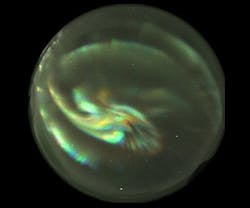Hyperspectral imaging sensors from Ball Aerospace chosen for advanced weather-forecasting satellites
Tempus Global Data officials have chosen Ball Aerospace as prime contractor to build six Sounding & Tracking Observatory for Regional Meteorology (STORM) hyperspectral atmospheric sounding sensors that will fly as a hosted payload in GEO orbit.
STORM hyperspectral sensors are designed to take high-fidelity measurements of atmospheric conditions -- data not currently available. This new information is expected to help forecasters make better predictions of hurricane landfalls, tornado formation, and other weather events.
Hyperspectral sensors can make quick measurements of vertical temperatures, water vapor, and wind profiles to help weather forecasters provide detailed warnings. Ball also will oversee the building of two additional sensors that will be free fliers.
Related: Hyperspectral imaging sensors come into their own for aerospace and defense applications
The idea is to place six separate hyperspectral sensors in fixed positions in geosynchronous orbit around the Earth. In this way the orbiting sensors can make quick repeat measurements in areas of interest without waiting for low-Earth-orbit satellites to come back into position. Geostationary hyperspectral sensors can help reduce repeat times for specific weather features to minutes.
Hyperspectral imaging divides a scene into many different bands of the electromagnetic spectrum, some of them visible to the human eye, and others that the eye cannot see. This slicing into many different light bands helps reveal important details not otherwise apparent.
Experts at Utah State University in Logan, Utah, developed the STORM hyperspectral sensors and will continue to participate in sensor technology development, while Ball Aerospace, as prime contractor, will oversee and build the sensors.
Related: Raytheon to move hyperspectral sensor program ACES Hy forward with podded flight tests
Tempus Global Data specializes in providing complex views of the atmosphere in three dimensions. The STORM sensor takes persistent and recurring slices of the atmosphere with high accuracy and clarity.
The company will create data visualization tools using algorithms that combine in-depth views of water vapor, temperature, and wind velocity, enabling views of weather conditions that may be forming in clear skies.
Ball Aerospace designs spacecraft, advanced instruments and sensors, components, data exploitation systems, and RF solutions for strategic, tactical and scientific applications.
For more information contact Ball Aerospace online at www.ballaerospace.com, Tempus Global Data at www.tempusglobaldata.com, or Utah State University at www.usu.edu.

